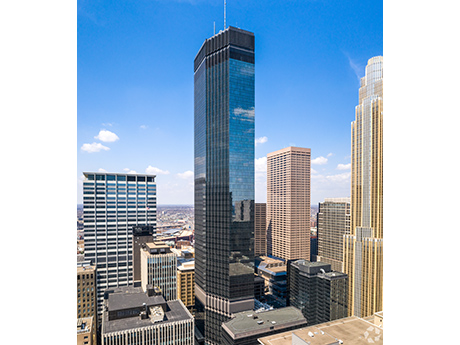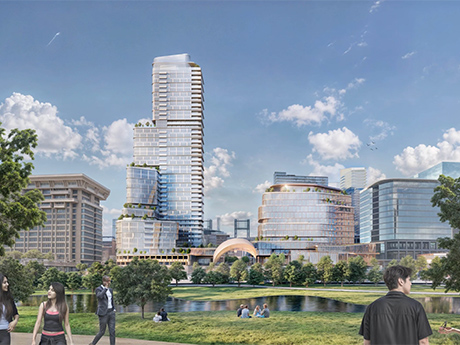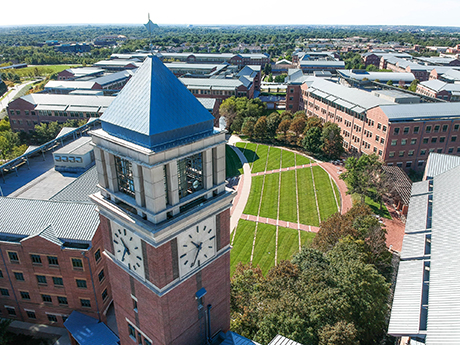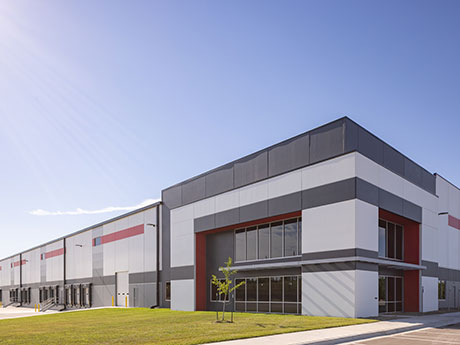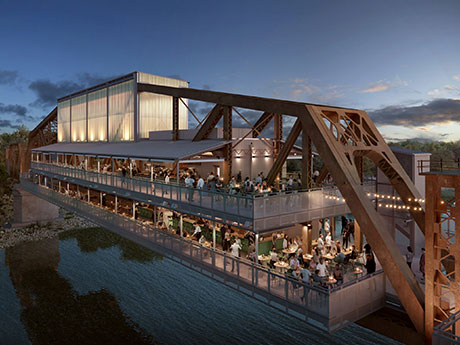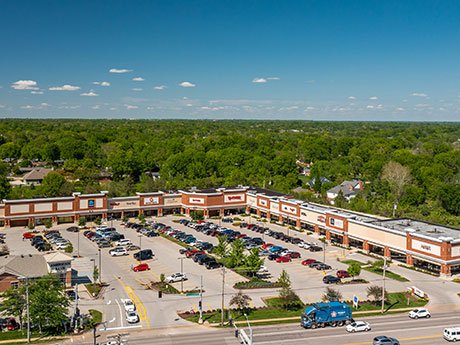By David Goldfisher, The Henley Group Secondary and tertiary office markets across the Midwest, including Chicago, Minneapolis, Madison, Milwaukee, Cleveland, Cincinnati, Columbus and St. Louis, are facing mounting pressure. While each city has its own challenges, a common theme is clear — vacancies remain high and liquidity is thin. Tenant shuffling One of the defining dynamics today is tenant reshuffling rather than net growth. As leases expire, employers frequently move from one building to another, seeking modernized space and stronger amenities. Renovating in place is disruptive and costly, while relocating allows businesses to upgrade with minimal operational downtime. This “musical chairs” effect highlights a deeper structural issue. There are only so many large anchor tenants in Midwest cities and few new entrants are seeking major blocks of space. There is more repositioning for existing tenants than attracting new ones. Flight to quality Landlords and developers are competing to deliver amenities that encourage office attendance and support talent retention. Modernized lobbies, tenant lounges and flexible collaboration areas have become standard expectations. Hines’ upgrades at Chicago’s 333 West Wacker Drive and 601W Cos.’ reinvestment in the Old Post Office demonstrate the scale of investment required. But not all landlords can compete. With …
Market Reports
By Emily Ackley, NAI DESCO The St. Louis retail market could be perceived as a contrasting story — national headlines continue to spotlight store closures and shifting consumer habits, and yet on the ground, St. Louis is working to write a quite different narrative. Vacancy rates remain tight, redevelopment projects are reshaping corridors and both suburban and urban districts are evolving to meet the demands of today’s consumers. It is not a market without its challenges, but St. Louis retail is far from stagnant. Market conditions As of the second quarter of 2025, the St. Louis retail market experienced a dynamic shift as a result of low vacancy rates, evolving consumer behavior and significant redevelopment projects across the St. Louis MSA. The overall retail vacancy rate stands at 4.7 percent, reflecting a 40-basis-point decrease quarter over quarter and an 80-basis-point decrease year over year, indicating a tightening market. Leasing activity remains robust, particularly in suburban areas of St. Louis, such as West County and St. Charles County, where vacancy rates have decreased by up to 140 basis points in the past year. This is being supported by a combination of steady population growth in the suburbs, shifting migration patterns and …
By Lindy Beyer and Matt Rau, CBRE Kansas City is a special place. We have long been known for our renowned barbecue, jazz and most recently, as the city where Taylor Swift’s fiancé works. Retail is at the core of our city, attracting visitors from all over the world to experience our city’s welcoming and rich culture. As the metro area has grown, so has the retail market. We are currently experiencing a period of robust growth, fueled by a combination of strong suburban demand, exciting new mixed-use developments and the appeal of big box vacancies. Sports have been an additional driver as the city continues to invest in its athletic and entertainment offerings. These venues attract large crowds — generating foot traffic and boosting sales for nearby retailers. Retail occupancy rates in Kansas City have increased from 93 percent to 95.1 percent in the last five years, showing the strong overall demand in the market. This is especially notable as there have been over 2.6 million square feet of new retail space delivered over that same time frame, with a large portion contained in mixed-use developments. Overall growth in the Kansas City submarkets has triggered a higher demand for …
By Anné Erickson, JLL Kansas City’s appeal is catching the attention of companies looking for more than just square footage. From corporate relocations like Fiserv and expansions by Propio Language Services, to a deep talent pool, business-friendly environment and central location, the metro is emerging as a strategic choice for growth. These factors are fueling activity in a market already defined by stable fundamentals, headline lease transactions and a strong flight-to-quality trend. While the overall vacancy rate remained at 20.2 percent according to JLL’s Q2 2025 Kansas City Office Market Dynamics report, the quarter delivered 192,000 square feet of positive net absorption, reversing early-year declines. Average asking rents held steady at $22.98 per square foot, signaling stability despite the competitive environment. For tenants seeking to secure best-in-class space, and investors targeting properties with long-term upside, Kansas City is increasingly worth a closer look. Flight to quality One of the clearest shifts in recent quarters has been the move toward high-quality, well-located buildings that can support hybrid work, collaboration and tenant amenities. After several years of shorter lease terms and cautious decision-making, companies are now committing to space that reflects their long-term workplace strategies. This was evident in several major second-quarter …
By Brian Lyss and Joshua Allen, CBRE St. Louis is typical of Midwest markets in that most of its office product continues to age. In fact, 73 percent of existing office supply in St. Louis was constructed before the 1990s. In a post-pandemic environment, users are seeking out amenity-rich prime space. Out of 53 million square feet of office product in St. Louis, 2.6 million square feet is considered “prime” in nature. Prime assets are the newest assets in St. Louis, located in walkable urban areas with an abundance of amenities. In early 2021, during the early stages of the pandemic, prime office availability (21.7 percent) was on par with non-prime (20.5 percent) as the market became increasingly concerned about the future of office use. Over the past 36 months, this surplus of available office has quickly turned into a shortage of prime assets. There has been virtually no new office construction in St. Louis, hitting the lowest levels on record. This fact guarantees that prime office space will remain tight until we see new construction begin to come out of the ground. Even if new construction does commence, the construction and lending environment is such that rates are anticipated …
By Mike Stromberg, Opus Kansas City made the list of emerging industrial markets back in 2016, and over the last nine years has more than proven itself to be a viable, profitable and competitive environment for development. Many rightly attribute the market’s continued growth to its central location within the U.S. as well as its transportation infrastructure, which includes the city’s location on the largest navigable inland waterway, at the cross-section of three interstate highways and in the middle of cross-country rail corridors running from Canada to Mexico and from coast to coast. These are unquestionably appealing features for businesses that want and need to quickly distribute products and access customers. Other qualities often lauded include a strong skilled labor pool with an estimated 2.4 million people — nearly 23 percent between the ages of 18 to 34 — living within a 50-mile radius of the city; a cost of living up to 14 percent lower than the national average; a historically low unemployment rate; and increasing wages above the national average. What really puts Kansas City on the map for developers, though, is how the state of Missouri has created a pro-business environment that leverages and advances these strengths. …
By Garrett Cohoon, Block & Co. Inc. Realtors The commercial real estate activity in the Kansas City metropolitan area showed substantial growth in 2024 for the retail, multifamily and industrial sectors. The office sector is still seeing record vacancy rates, but the annual loss over 2023 is slowing down. According to CoStar, the office vacancy rate for 2024 is up 11.8 percent in Kansas City while the national index is at a 13.9 percent increase. That’s only 0.5 percent higher than last year in Kansas City and we expect to see that trend turn around in the next year. The retail sector saw new brands like Aritzia grow into the Kansas City market. Whataburger opened its 14th location in the past two years as drive-thru restaurants have continued to be a preference for consumers and investors alike. Wellness-based businesses and health clinics have also made good strides in the market. Kansas City has seen an increase in new experiential attractions this year, including national businesses like Puttery minigolf, Andretti indoor karting and SandBox VR. These new attractions have been key to many new development complexes and redevelopments of existing strip centers. Mattel also announced a new adventure park to be …
By Grant Mechlin, Sansone Group The St. Louis retail market showed impressive resilience in the second quarter of 2024, thanks to strong consumer spending and growing demand across various sectors. Despite challenges such as higher borrowing costs and persistent inflation, the market tightened considerably, with availability dropping to a record low 4.8 percent and well below the five-year average, according to CoStar. This strong absorption has persisted for nine consecutive quarters, highlighting the market’s ongoing strength. A major factor behind this is the limited new supply — only 770,000 square feet of retail space was added in the past year, with nearly all of it quickly absorbed, according to CoStar. This scarcity has fueled development, especially in areas like quick-service restaurants, banks and discount retailers, as tenants are forced to explore new construction as the only viable option to combat a lack of supply in the market. Meanwhile, the overall prices of goods and services in the St. Louis area saw a 3.4 percent rise over the past year, according to the Consumer Price Index. While food costs came down slightly, there was a 5.4 percent increase in energy costs and 4.3 percent for all other consumer expenditures. Despite …
By Mary Lamie, Bi-State Development, St. Louis Regional Freightway The St. Louis regional industrial market continues to be a magnet for investment, with significant capital investment dollars flowing into four target industry sectors that remain key drivers of the bi-state economy. These sectors include metals, advanced manufacturing, food and AgTech, and chemicals. They are legacy industry sectors poised for continued innovation, job creation and economic diversification, in part due to the region’s exceptional logistics and transportation assets and established talent pipelines. Metals The St. Louis metropolitan area ranks second in the United States for mineral and ore exports. With more than $2.9 billion exported in 2022, the figures prove the market is well established for metals manufacturing, processing and shipping. The metals market is expected to grow with nearly 17,000 metals industry workers already in the region, and with copper supplier Wieland making a $500 million investment at its East Alton, Illinois, facility — a move that will retain 800 jobs in the region. “Wieland is committed to a sustainable future and is taking significant steps to modernize its East Alton facility,” says Greg Keown, president of Wieland Rolled Products North America. “This effort solidifies our ability to supply the …
By Kellen Cushing, Carmody MacDonald PC Commercial and residential construction projects are inherently complex undertakings involving numerous parties working under tight deadlines and limited budgets. Change is inevitable and unpredictable in these projects, most often due to changes in project scope, incomplete or incorrect design, and unforeseen physical conditions. When something doesn’t go according to plan, it can impact the other parties’ abilities to perform their jobs in a timely manner and lead to litigation. Claims and litigation can be costly, time consuming and stressful for all parties, and may damage the relationship and reputation of the parties involved. Proper contractual planning among project owners and contractors can reduce the likelihood of litigation. Making preliminary management plans and incorporating them into the project’s contracts provides effective ways to address changes that can occur during a project and keep things moving forward. While preparation cannot always prevent roadblocks in construction projects, preemptive planning can make for much smoother sailing, even in the face of unpredictable circumstances. The best ways to avoid or minimize costly and time-consuming lawsuits include the following: Know your contract. Create a clear and comprehensive contract that defines the scope, schedule, budget, quality and responsibilities of …
Newer Posts


